Coming soon...
The "Gringo Trail" refers to the well-trodden backpacker route within Latin America. This travel film provides a glimpse into my experiences on "the trail".
Coming soon...
The "Gringo Trail" refers to the well-trodden backpacker route within Latin America. This travel film provides a glimpse into my experiences on "the trail".
I’m very attracted to out-there-middle-of-nowhere-type places, so when a fellow backpacker told me about Punta Gallinas, I knew I wanted to go. Punta Gallinas is the most northern point of South America. It is located in Colombia. I was told this place was only accessible by 4WD, and that it is where the desert meets the ocean. I asked a local hostel worker about Punta Gallinas. He told me, “It’s a very lonely place.”
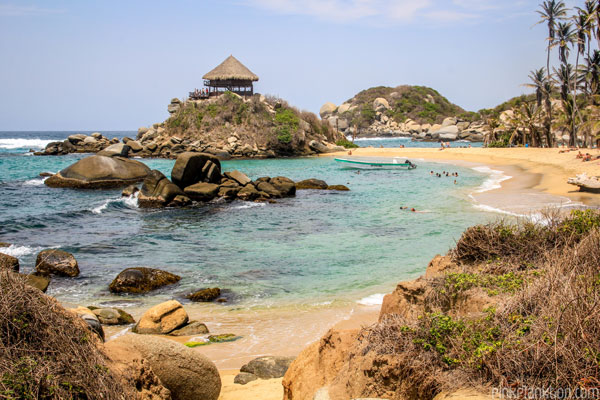 I was making my way up the Colombian Caribbean coast in 2015 with just a small backpack containing a change of clothes, a microfiber towel, my camera, my water bottle, a toothbrush, and toothpaste. I had left the rest of my belongings, including my laptop, back in Santa Marta. I decided to leave my big backpack behind as somewhat of an experiment. I had a week left in Colombia to see the coast. I knew there were many stops along the way and that Punta Gallinas was the final one. Whether I made it there didn’t necessarily matter. I just wanted to see where traveling ultra-light and disconnected would take me (this was before I had a smartphone!). I wanted to experience how people used to travel ‘back in the day’, without technology and a guidebook, but rather, word of mouth and spontaneity.
I was making my way up the Colombian Caribbean coast in 2015 with just a small backpack containing a change of clothes, a microfiber towel, my camera, my water bottle, a toothbrush, and toothpaste. I had left the rest of my belongings, including my laptop, back in Santa Marta. I decided to leave my big backpack behind as somewhat of an experiment. I had a week left in Colombia to see the coast. I knew there were many stops along the way and that Punta Gallinas was the final one. Whether I made it there didn’t necessarily matter. I just wanted to see where traveling ultra-light and disconnected would take me (this was before I had a smartphone!). I wanted to experience how people used to travel ‘back in the day’, without technology and a guidebook, but rather, word of mouth and spontaneity.
I had made it to a quaint little beach town called Palomino. As lovely as it was there, everyone I was meeting was headed the wrong way. Few others had even heard of this Punta Gallinas place, let alone knew how to get there. It certainly was an off-the-beaten-path destination, in the already off-the-beaten-path country of Colombia. I did, however, meet a couple guys who had just come back from Punta Gallinas. They said that getting there by public transport was very difficult, and they recommended doing a guided tour from the next town over called Riohacha. Although I am not a fan of guided tours, I figured I would have a better chance of meeting other travelers headed north in the next town over. With that thought in mind, I embarked for Riohacha the next day.
I left for this town called Riohacha not knowing anything about it. Without internet access to Google it, I just kind of assumed it was the next backpacker beach stop along the way. I jumped on a local bus for a couple of hours, and was very surprised when we stopped in a busy, bustling town, and they told me it was time to get off. Riohacha was crowded, congested, and nothing like a quaint beach town at all. I wandered around and there was not a hostel in sight. It became apparent to me that this was not a backpacker destination. I did come across a few travel agencies, so I started inquiring about tours. None of them had people going on tour to Punta Gallinas for the following next few days.

I sat on a bench and pondered my options: I could keep walking around looking for a hostel, I could find an internet café and research if there were any nearby, I could figure out how to get to Punta Gallinas on my own and maybe move on… Just as I was thinking, a middle-aged man with a backpack approached me. He turned out to be Colombian, but spoke very good English. He told me how he used to be in the Navy and lived in the States for a while, and how now he is a perpetual traveler who gets by selling bracelets on the street. I asked if he knew of any hostels and he said he did! For a second it looked like everything was falling into place, just as I had hoped. We walked around, and it became apparent to me that he had confused hostel for hotel. From what I could tell, there was no backpacker scene in this town at all. We wandered around some more and he asked a few hotels for prices. He was very nice and polite, but something just felt off. We came across a hotel that was quite cheap, however they only had a room with a double bed. The man offered to split the room and sleep on the ground, but this made me feel uncomfortable. I followed my instincts and abruptly told the man I would head back to Palomino. He walked me to the side of the highway where you wave down the bus and waited with me. At this point I was scared that I had attracted a stalker, and that he would get on the bus with me. But thankfully he did not, and we parted ways peacefully.
The ride back to Palomino was a low point in my trip. I love traveling solo, it is my preferred way of travel, but this was definitely one of those times I wish I had a friend. I was questioning if I had made the right decisions by not staying in Riohacha, by not researching beforehand, by not bringing my laptop… I finally came to the conclusion that, it is what it is.
I checked back into the hostel I had left that morning. Oddly enough, the only other two guys in the dorm had just come back from Punta Gallinas. They had done it on their own, and, over a few beers, gave me detailed instructions as to how to get there. It wasn’t at all as hard as the other guys I had met made it sound. I decided the next day I would rest, and embark the day after.
The next day I met a girl headed to Cabo de la Vela within the next few days. Cabo (for short) is basically a small fishing village. It is also the stop before Punta Gallinas. Getting to Cabo was the hard part, as it involved many steps. We decided we would leave together the following morning. We departed around 7am in order to make it to Uribia before noon, as that’s when the last 4WD collectivos leave for Cabo. The first step was catching the local bus for a couple hours to a place a bit past Rioacha called Quatro Vias. On the bus we met another couple headed the same way. At Quatro Vias there would be taxis waiting to take us to Uribia. The four of us split a taxi and in another couple hours we were in Uribia. Here, the taxi found us a 4WD collectivo. These trucks bring supplies and local workers to the remote communities in or near Cabo de la Vela. The trucks wait around until they are full, and then set off. We were now in for another two-hour ride, and it was a bumpy one; lots of desert and nothingness. I couldn’t believe that people actually lived this far out from civilization, from roads, from food, from everything!
Cabo is an interesting place, as there’s not much to do. There is a small community that lives there, and a bit of tourist infrastructure, consisting of a few locals who rent out rooms and hammocks. But it’s mostly just desert and ocean. Our driver stopped off at a few places for accommodation, and we inquired about prices. We finally settled on one lady who was offering hamacas (hammocks) for $15/night. It is quite common for places in Colombia to rent out hammocks to budget travelers.

We did the short walk to the viewpoint for sunset. It was absolutely amazing! I’ll let the pictures speak for themselves (although, they really don’t do it justice).

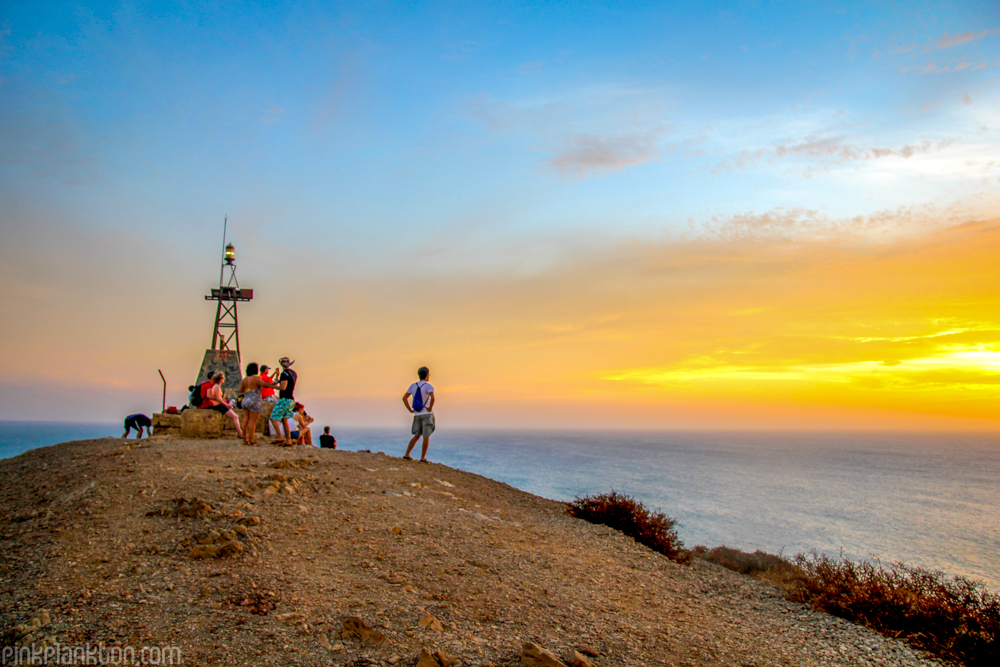
Afterwards I looked into arranging transport to Punta Gallinas. Unfortunately, I learned that jeeps only departed in the morning, and come back in the evening the following day. This meant I’d have to part ways with the other three, as they were staying in Cabo for another night. The cost was also quite a bit more than what I expected. It was about $140 USD roundtrip, which is very costly for South America, but this was a set price. The last ATM we were at in Uribia did not let me withdraw cash, but I figured I’d be fine because I had quite a bit on me. However, this extra cost would mean I was cutting it very close. Rachel, the girl I had met in Palomino, was nice enough to lend me a bit of cash. Although we were parting ways, we would meet up again in Santa Marta, where I could pay her back. I’m very grateful for her kindness, as I would’ve been very disappointed if I had come all that way and not been able to make it the final step.
The following morning I arose for my 5:30am pickup. It was just my driver, Ricardo, and I, headed to Punta Gallinas. It was another four or so hours of bumpy riding through the desert scenery. The highlights were probably when we passed through indigenous villages, where the children had setup strings that block the road, and you had to give them a snack in order to pass. I wish I got a photo of this, as it was very cute! The kids would come running to their string gate whenever they heard a car coming. We passed about ten of them on the way there. After a while there was more nothingness.
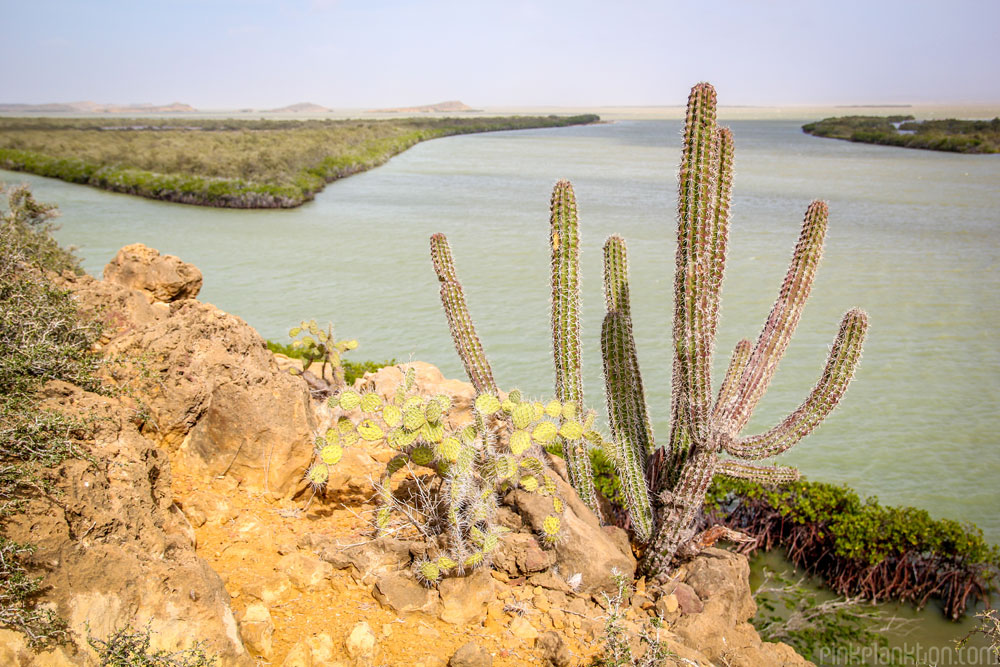
Finally, we got to the ocean, where I was to wait for a boat. A small boat arrived bringing just a few tourists back the other way. A few others and I boarded. A short ride across and bit of a hike up a hill, and we had reached a few huts. This is where we would spend the duration of our stay. The main hut was a restaurant and hammocks were available for rent. There was about ten of us. I befriended Sarah, an American girl with Colombian roots. Sarah was there on vacation with her family. It was nice to have someone to converse with, as well as translate what exactly was going on, as it seemed none of the rest of the group spoke much English.


After getting settled in and having breakfast, we all loaded into a van, which would take us on a tour of the area. The first stop was the geographical most northern point of South America. Many past travelers had left stone towers here. We had a bit of time to take some pictures and take in the scenery.
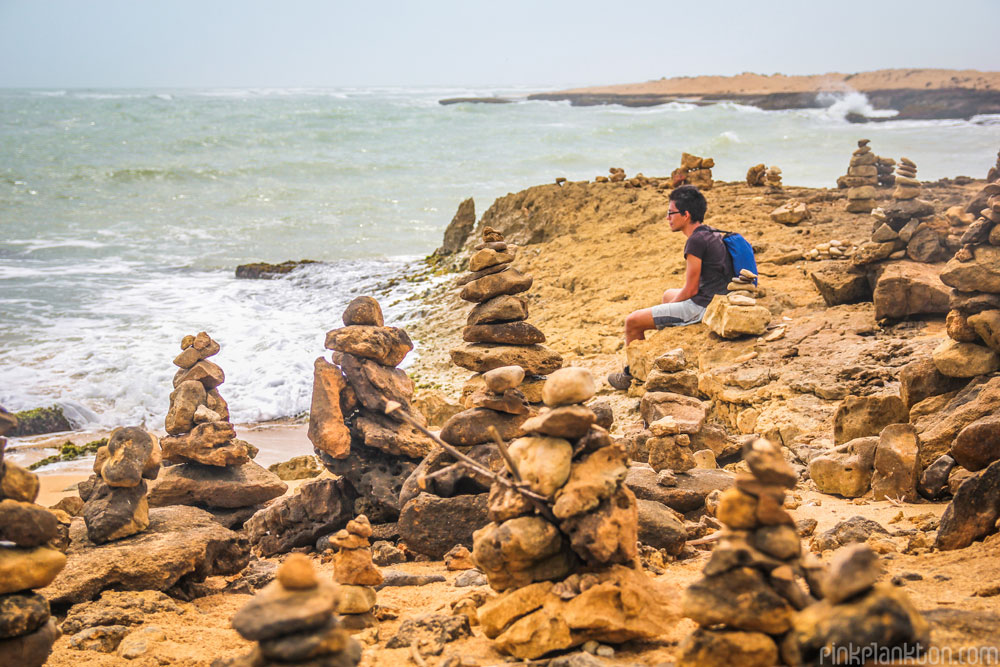
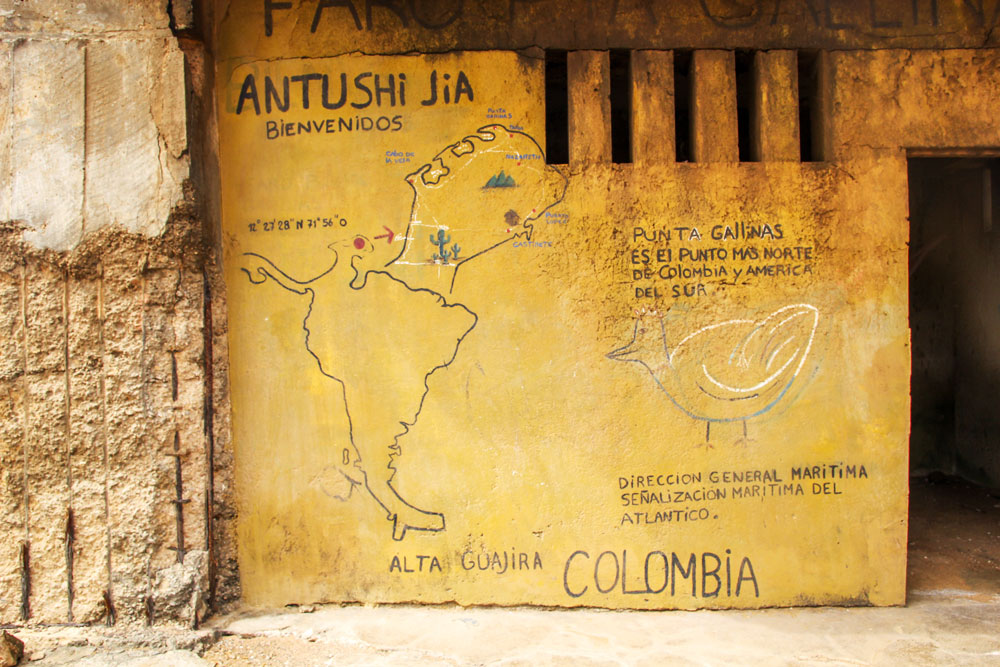
Actual map of the journey:
After, we headed to the beautiful red sand dunes, which were absolutely amazing! These were the most amazing sand dunes I had ever seen. They stretched for as far as the eye could see. They were so high up and you could roll straight into the ocean. We were given a few hours here. I spent most of this time collecting shells, as there were so many around! This was by far one of the most beautiful beaches I’ve ever had the pleasure of visiting.
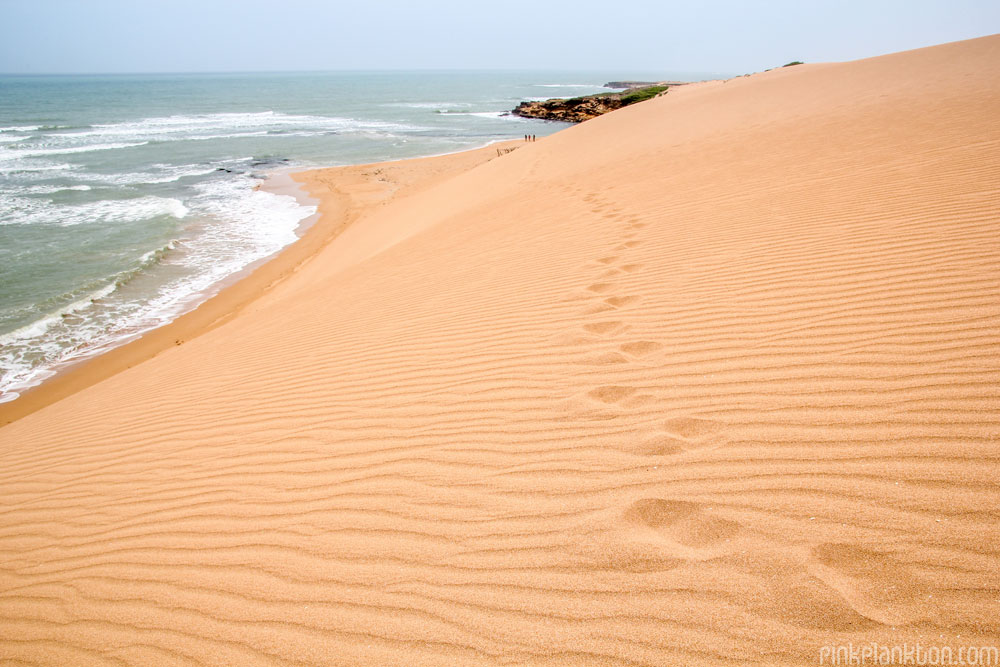
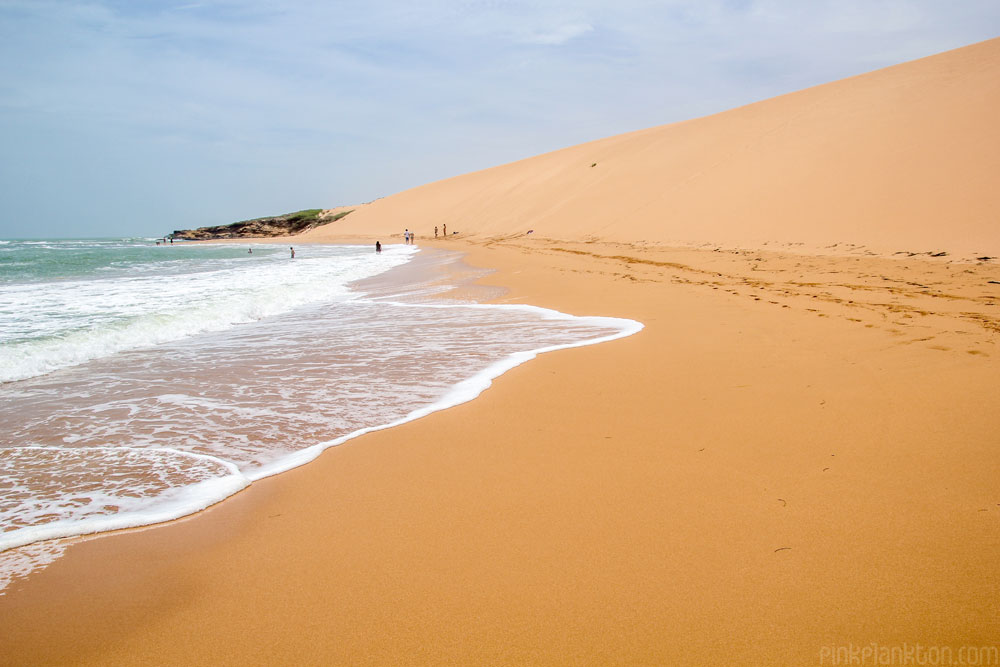
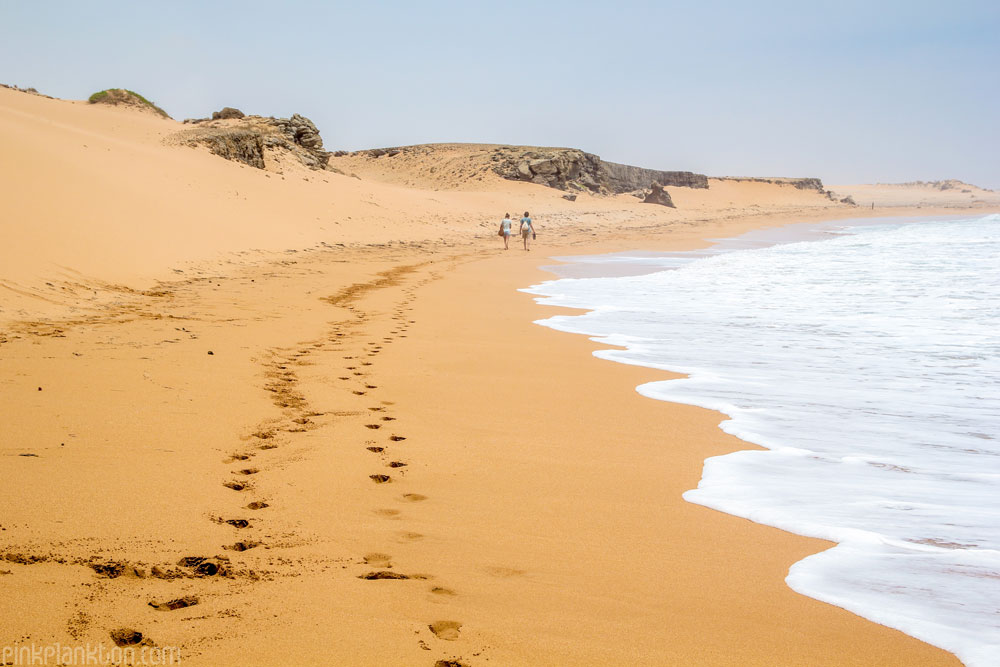
When we got back I went on a walk to explore the vicinity. It was very interesting to see that there were shells stuck in the ground with almost every step. This was surprising because we were quite a bit elevated from the ocean, but clearly, the ground I was walking on was once the ocean floor, many years ago.
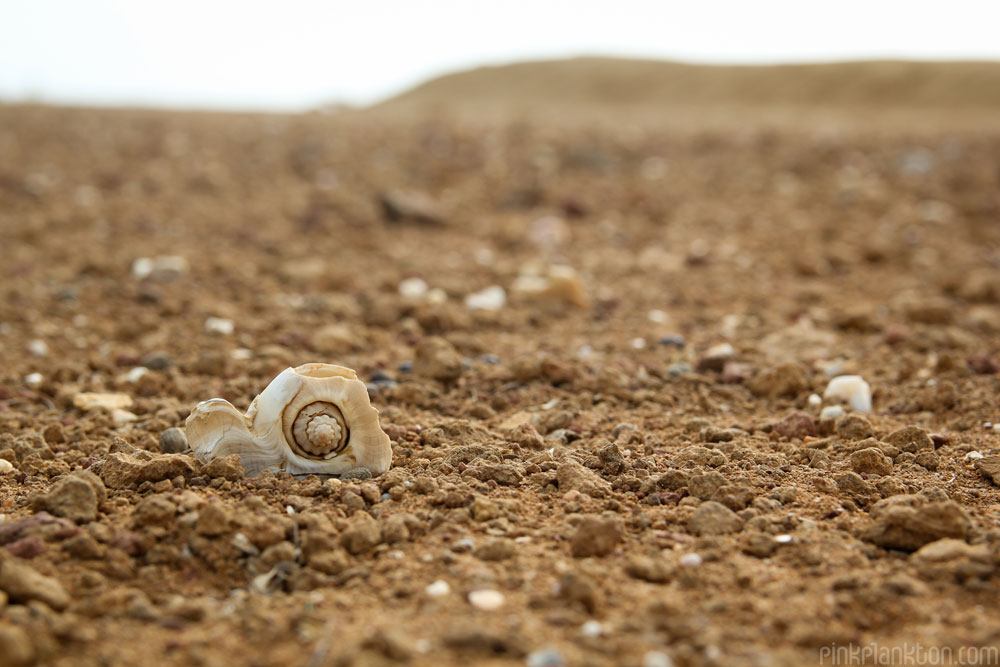
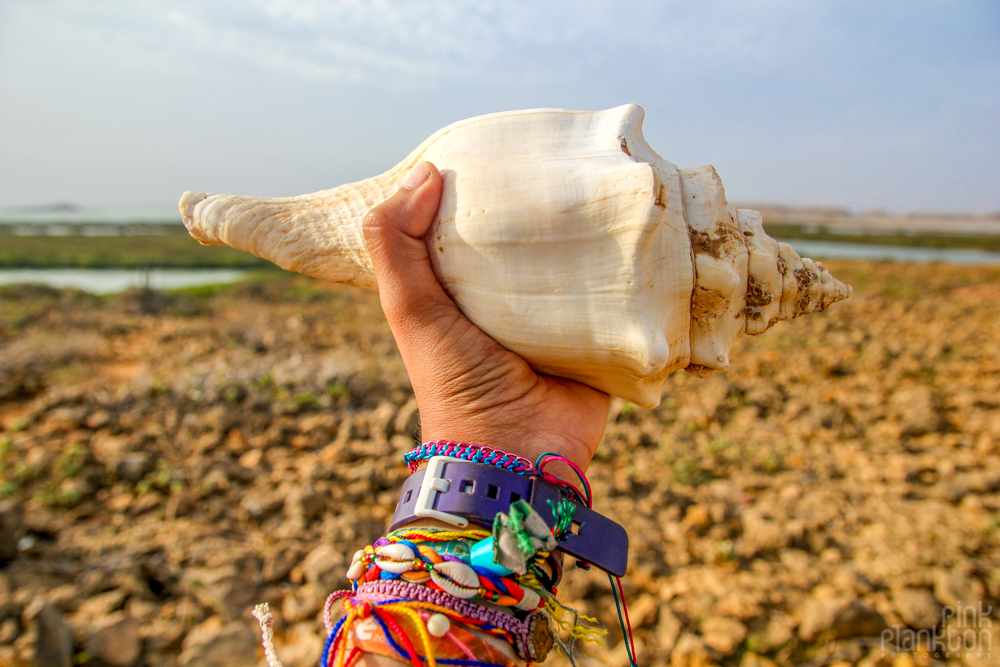
I passed a few houses along the way, thinking about how it must feel to live in this remote environment. At one point, a little girl saw me collecting shells, and ran back to her house to retrieve a special small shiny shell as a gift to me. This was very touching, and I wished I had something to give her in return.
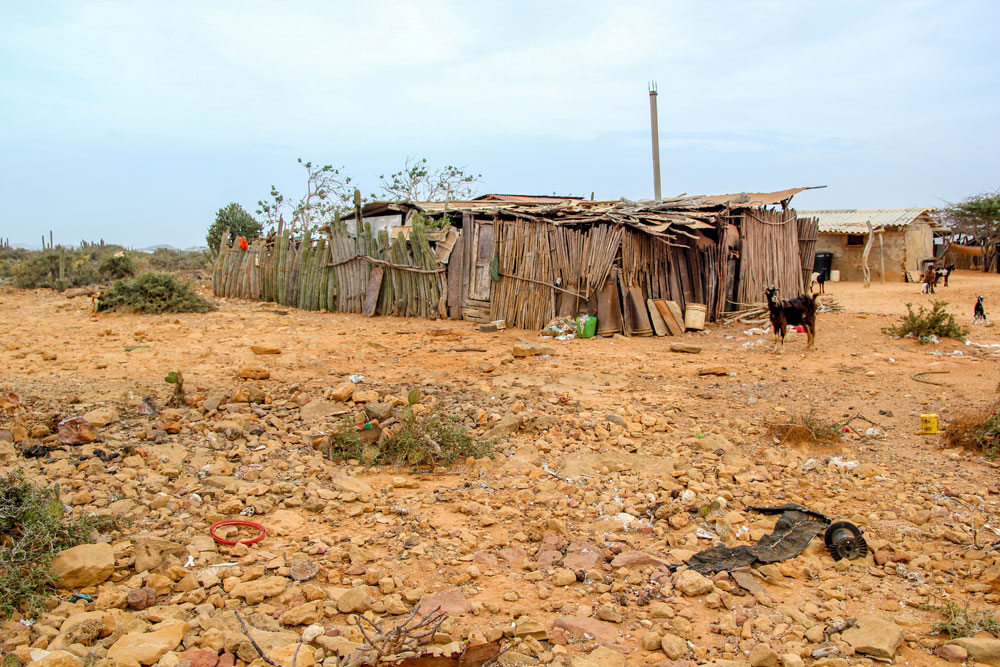
I went onward and watched the sun set amidst the cacti. I was so grateful to have finally made it to this place and so grateful for this experience. I reflected on everything that I had been through over the past three months of backpacking South America. Moments like this are why I love to travel.

The next morning was another early morning. We all loaded onto the boat by 7am and were taken back across. Everyone else had their drivers waiting, but Ricardo was nowhere to be seen. One of the other drivers told me he was on his way, and so I waited with the boat guys. About half an hour later a different driver collected me, trying to explain something in Spanish. The only thing I got out of it was "Ricardo" and "Cabo de la Vela." I had agreed with Ricardo that the price would include drop off back to Uribia, not Cabo! I tried explaining this to the new driver, but the language barrier was too much. I did not understand his Spanish and he did not understand my English. I succumbed to the fact that I was being taken back to Cabo, and I had been ripped off.
At this point, I was also getting stressed about making it back to Santa Marta on time to meet Rachel. I figured that the collectivos only left for Uribia early in the morning, which meant I might have to spend another night in Cabo. Not only did I not have enough cash on me for this, but I also had no way of contacting Rachel. We agreed we’d meet that evening in Santa Marta, and if I didn’t show up, I didn’t want her to think I did this intentionally so I wouldn’t have to pay her back. We had only met a few days ago, and I was grateful for her trust.
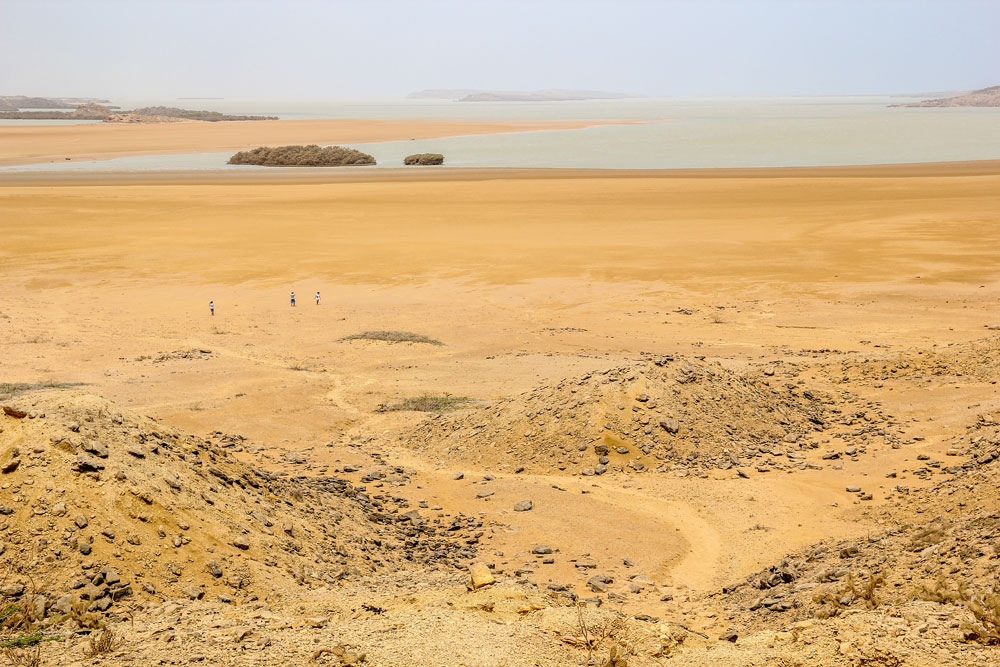 The long ride back to Cabo had me freaking out, but it also made me rethink my conversation with the new driver. He kept saying “Ricardo auto”, meaning Ricardo’s car. And then I thought about how the new driver was late, and then I asked, “Ricardo’s auto es no funciona?” To which the driver responded, “Si, si!”
The long ride back to Cabo had me freaking out, but it also made me rethink my conversation with the new driver. He kept saying “Ricardo auto”, meaning Ricardo’s car. And then I thought about how the new driver was late, and then I asked, “Ricardo’s auto es no funciona?” To which the driver responded, “Si, si!”
“Quantos dias es funciona?”
“Dos, tres horas”
“Ah! En dos, tres horas, Ricardo’s auto es funciona, yo y Ricardos es Uribia?”
“Si!”
With my awfully limited knowledge of Spanish, I had successfully confirmed that Ricardo’s car was broken down, but would be fixed in no longer than a few hours. This would leave enough time to make it to Uribia afterwards!
Once we got to Cabo, I thankfully learned that this was correct. Ricardo and a few of his friends were working on his jeep. I asked if we would go to Uribia that day and he seemed pretty confident we would. After a couple hours of waiting at his house, the jeep was finally fixed! The men got out from underneath and we were on our way by 2pm. Thank god.
While driving back, Ricardo asked (in Spanish) if I knew how to drive. I responded yes. He then stopped the car and got out of the vehicle. I realized then that he was actually asking if I wanted to drive! Out there, the road is literally just one big open desert. I took up this opportunity and switched to the drivers seat. It was a really cool experience to be driving freely across such a vast, open landscape. Once we got to the main road, I stopped to let Ricardo take over. We finally got to Uribia and he found me a taxi going towards Riohacha. At this point the sun was setting and I was very sleepy. The taxi circled around Riohacha for God-knows-how-long. The way taxi’s work there is they don’t leave until they are full. I kept falling in and out of sleep. All I know is that by the time we set off with four more passengers, it was dark.
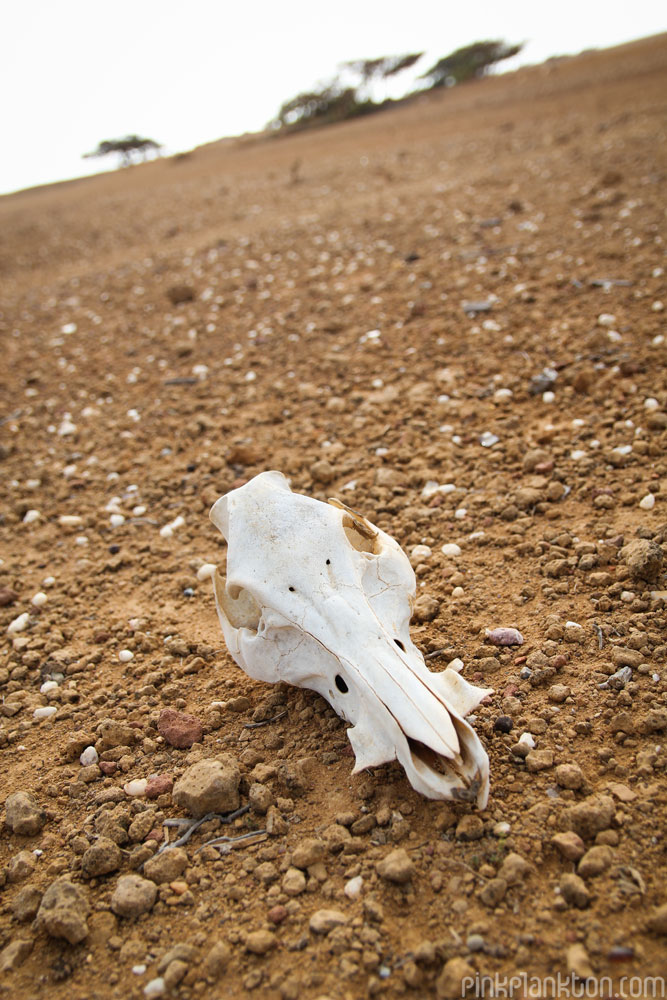
The taxi dropped me off at the bus station, I found an ATM and got out more cash, and jumped on a bus back to Santa Marta. Rachel was waiting at the hostel, just as planned. It had been quite an adventure, but was I ever glad to get back to my big backpack and all my belongings.
This experience allowed me much time to reflect on many different things. The art of solo travel was one of them. Everywhere else in the world that I’ve traveled solo, it has been easy and almost effortless to meet others going in the same direction, and share experiences with.
But solo travel has its pros and cons, its ups and downs, just like everything in life. When you are looking for somewhere so remote and so unknown, things don’t necessarily fall into place. As a solo traveler, you must be comfortable with the company of yourself.
Many backpackers have that yearning desire to get ‘off the beaten path.’ It almost seems as if we are secretly looking for that place, that secret paradise, that unknown, remote spot that was found not through some guidebook, but through an outlandish, wild tale. Perhaps this is secretly what I wanted, but I wonder if this is even possible anymore? If someone’s told you of some wondrous, undiscovered place, chances are, Google already knows all about it. I suppose, like everything in life, there is an easy way and a hard way. And if you’re one who believes that the journey is more important than the destination, then perhaps the hard way is the better way to go.
Photo Credits: image 2 - FreeImages.com/Daniel Andres Forero
The east coast of Australia is one of the most popular backpacker routes in Australia, and possibly the world. However, if you are visiting the country, and can afford the time, I highly recommend traveling the west coast as well! The beaches are absolutely beautiful, deserted, and crystal clear. I personally found Ningaloo Reef (on the west) to be even more stunning than the Great Barrier Reef (on the east). Because there are much less traffic along the west, there is much more of a sense of 'being out there, alone and on your own'.
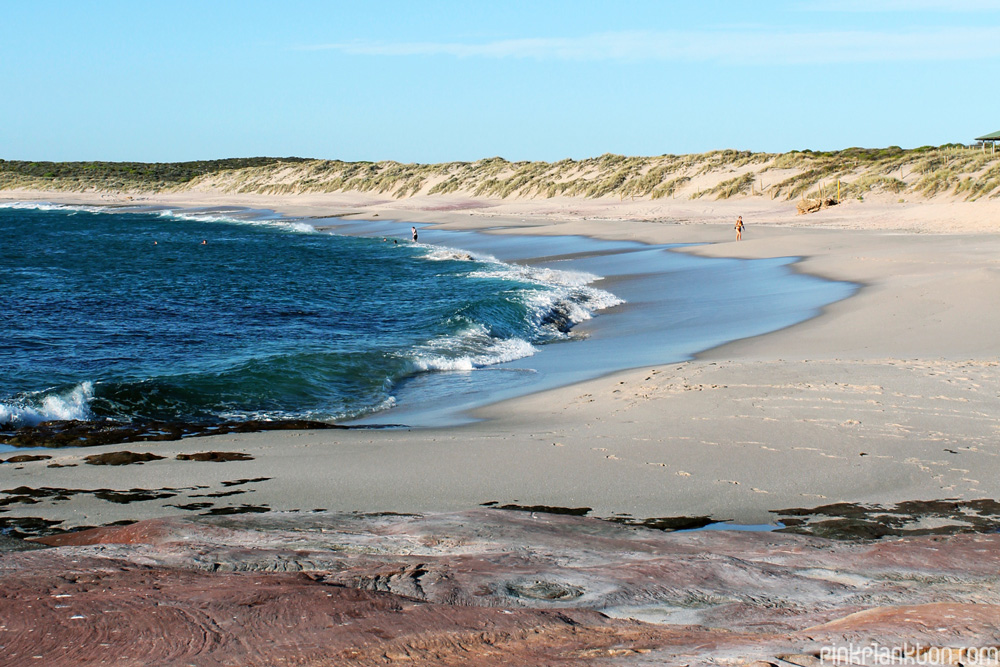
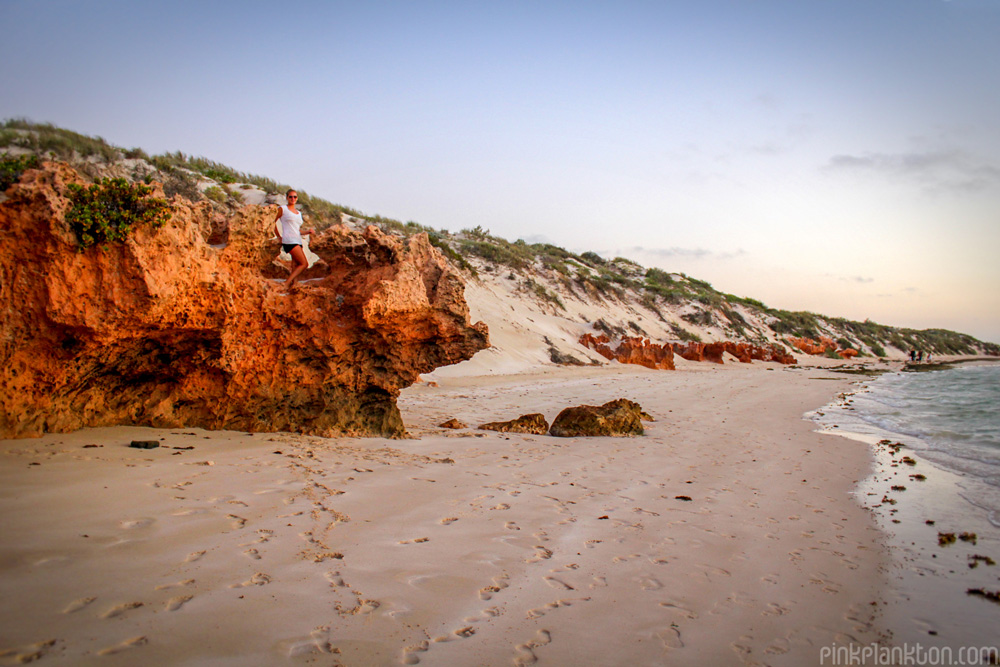

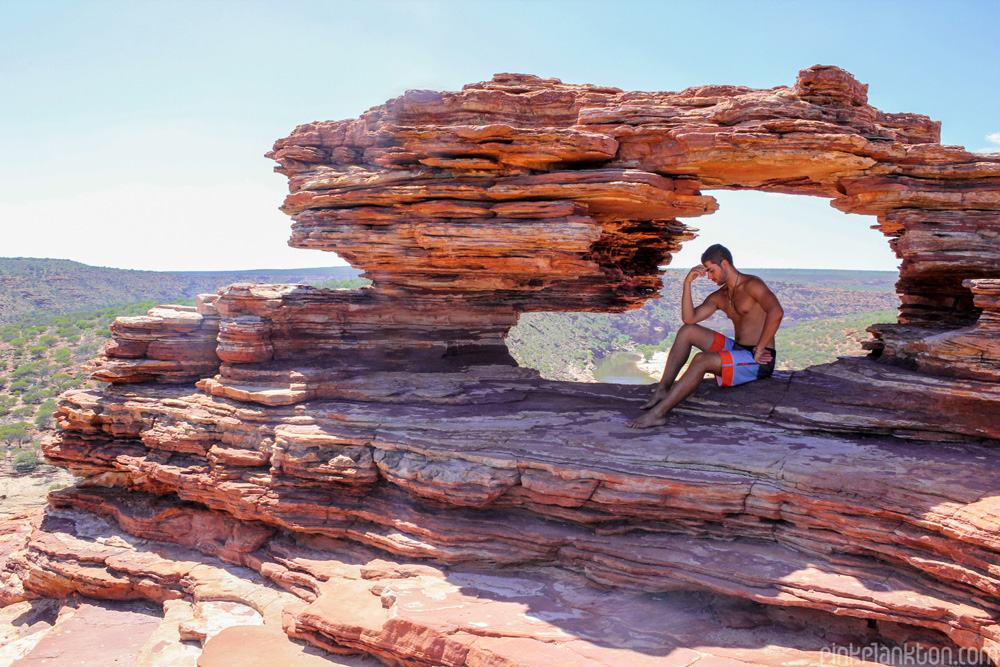
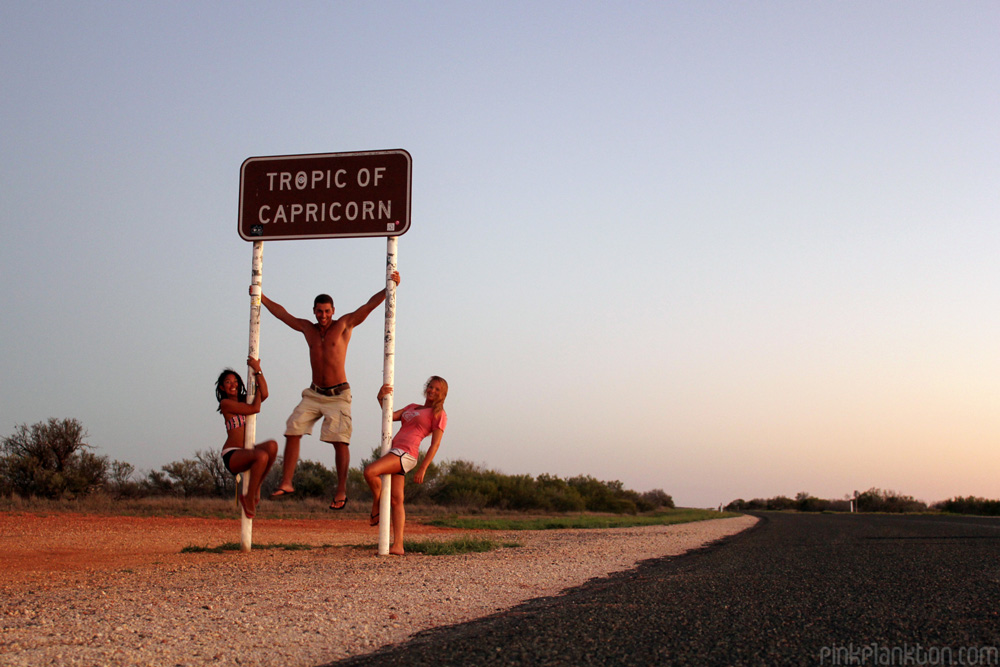
These photos were taken back in 2012. I found a couple of backpackers looking to do the same route off the popular site Gumtree. We met a few days before to feel each other out. All went well, so we went ahead and rented a campervan, then spent the next two weeks traveling the coast together!
Our route was as follows: we departed from Perth and drove inland up to Broome, stopping at Karijini National Park along the way. Afterwards we headed back down along the coast. This map outlines the major stops:
Some find the idea of traveling with random people you've just met daunting. What if you don't get along? What if they turn out to be creepers? These types of questions are always a bit of a concern, but I've found that if you meet the people beforehand and go with your gut feeling, the majority of the time everything will work out amazingly!
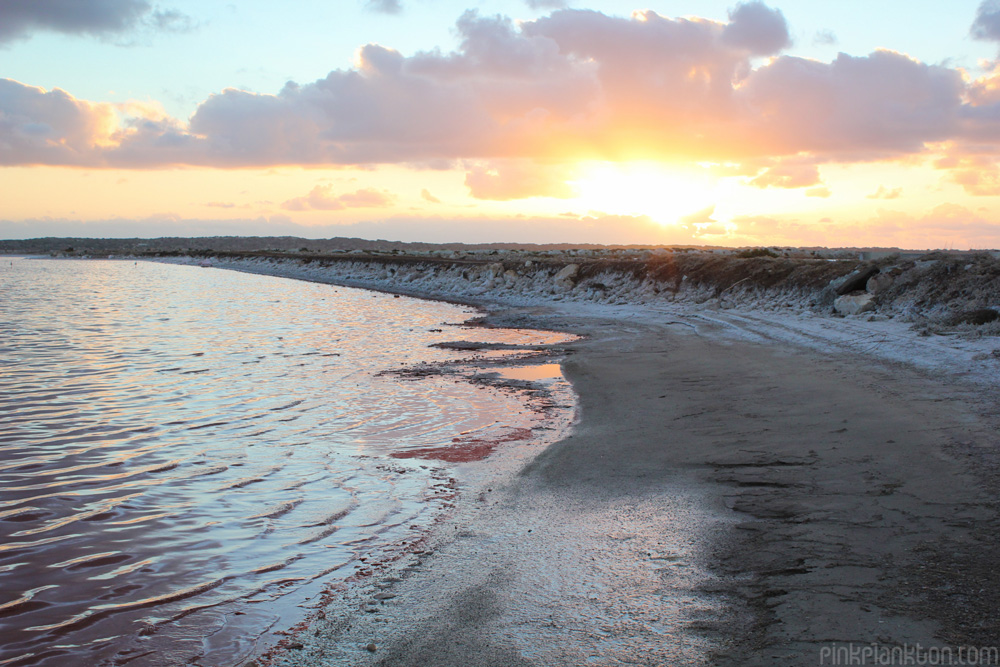
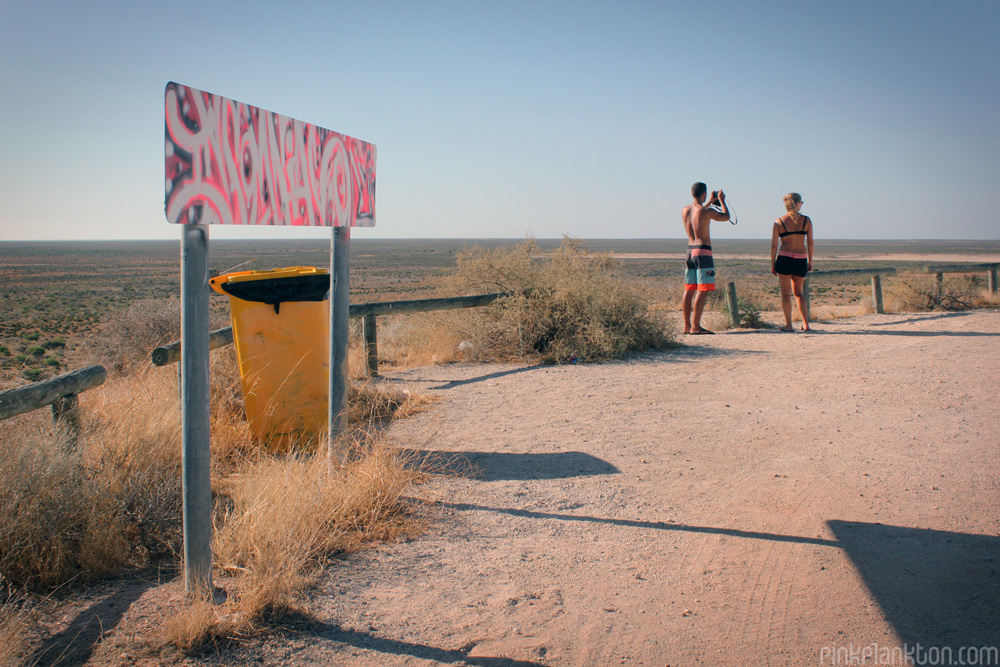
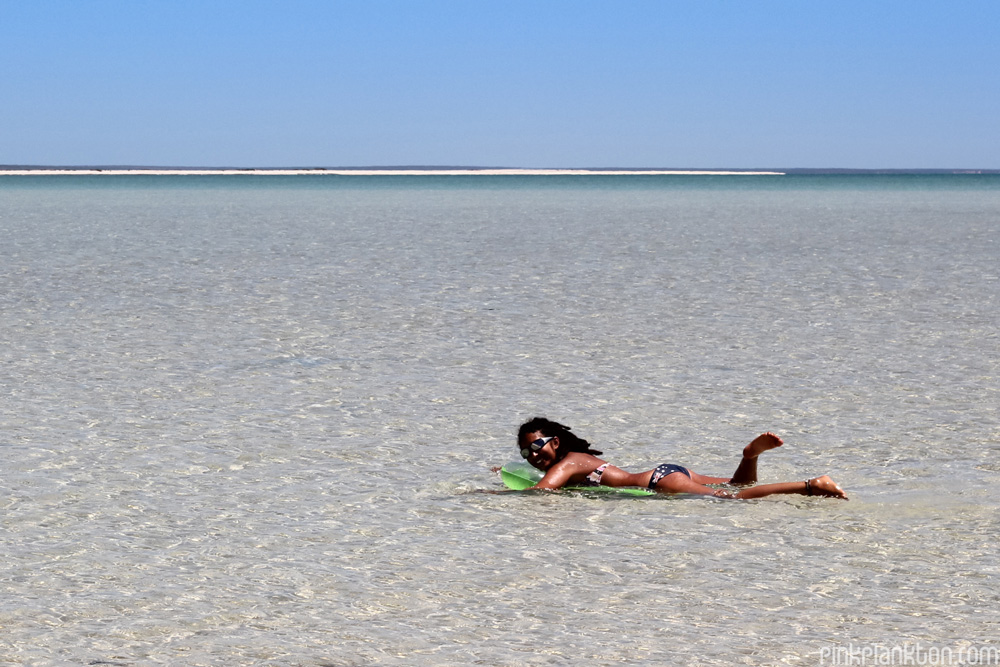

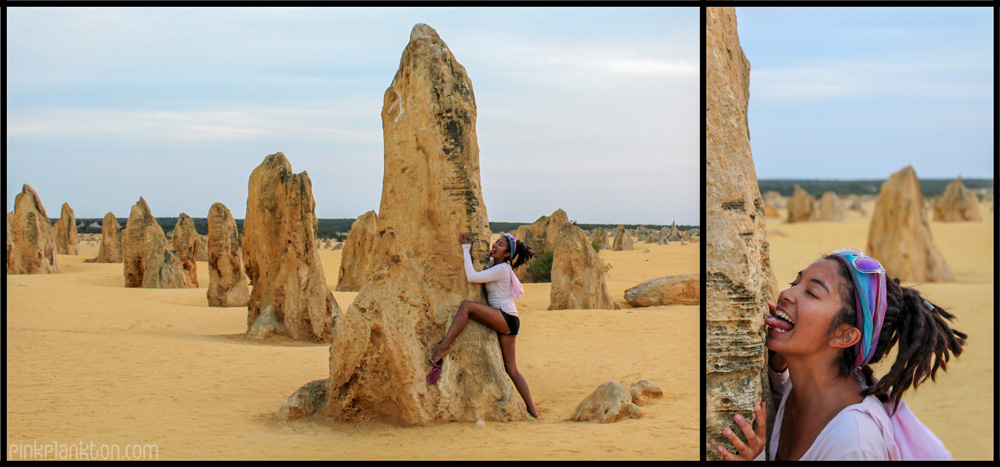
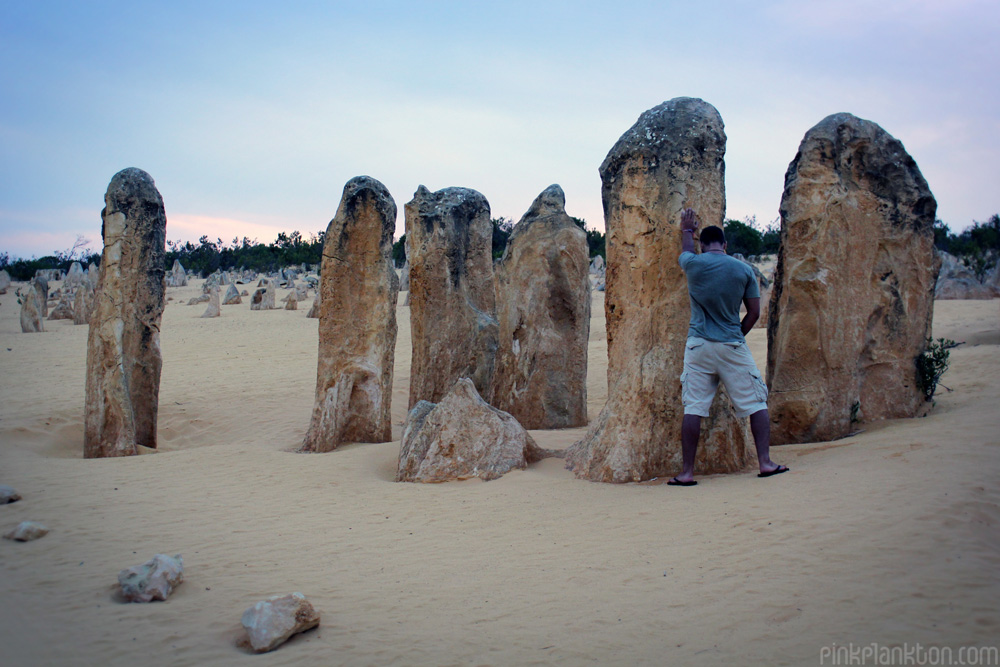

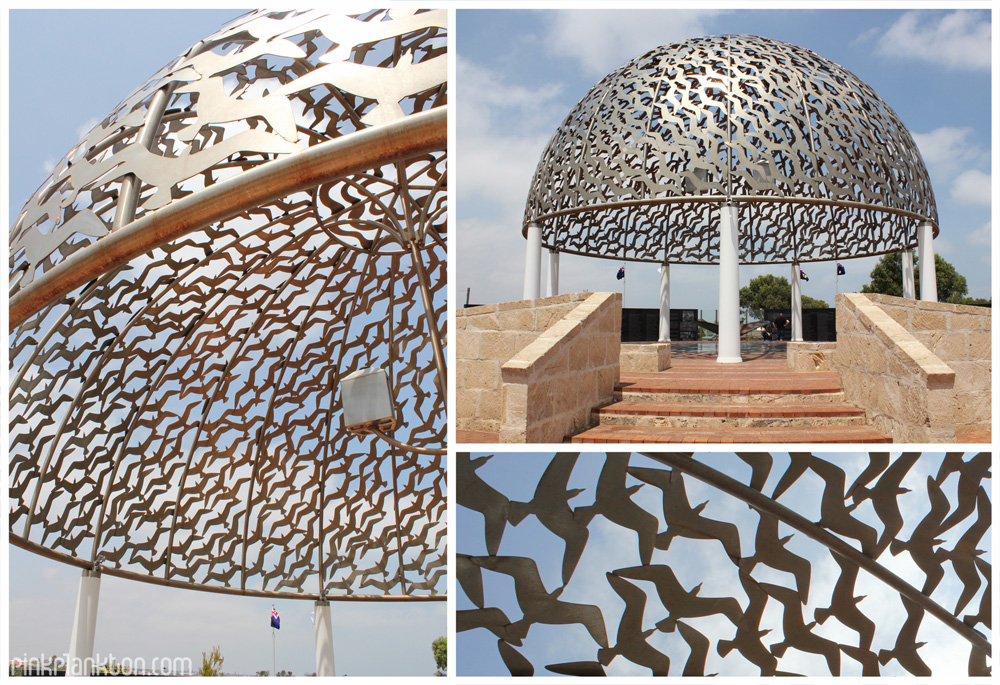
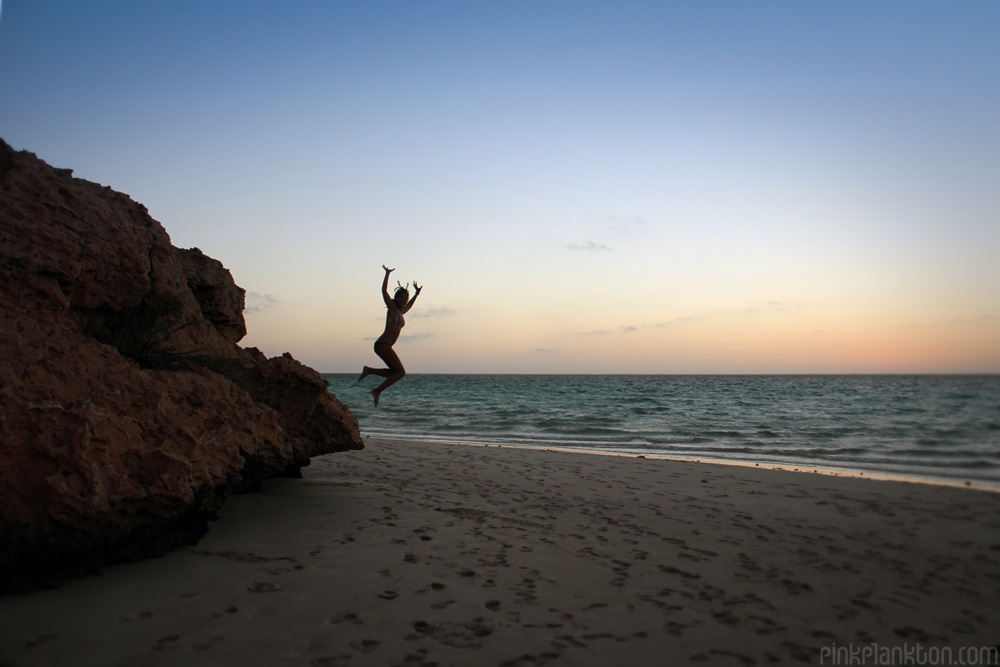
Finding random people to travel with is actually very common in Australia. There there are so many backpackers, especially solo backpackers, either traveling the country or doing a working holiday. You'll find hundreds of posts online, notices up on noticeboards in hostels, etc. It will force you out of your comfort zone and you will end up learning a lot about yourself!
Bangkok, Thailand, is commonly referred to as 'the gateway to South East Asia.' And Khao San Road in Bangkok is known as 'the backpacker centre of the universe', due to all the amenities and comforts it provides to the newly arrived foreigner.
I find it interesting how, when I first visited Thailand, roughly 3 years ago, Khao San mesmerized me enough to put together this short montage. But now that I live here in Thailand, Khao San is the last place in the country I would ever want to be.
*video audio taken from film adaptation of Alex Garland's "The Beach"
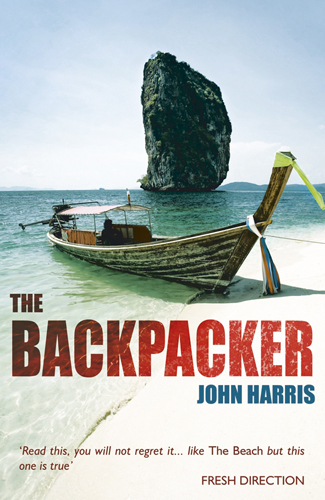 I stumbled upon a book called "The Backpacker" by John Harris, while backpacking South East Asia a few years ago. It's based on a true story, the story of his life, and its a freaking amazing story. After finishing the book I did some research on Mr. Harris and found an interview he did back in 2012. Unfortunately, the interview is no longer online, but I had saved a copy of the answer to his last question:
I stumbled upon a book called "The Backpacker" by John Harris, while backpacking South East Asia a few years ago. It's based on a true story, the story of his life, and its a freaking amazing story. After finishing the book I did some research on Mr. Harris and found an interview he did back in 2012. Unfortunately, the interview is no longer online, but I had saved a copy of the answer to his last question:
If you were to be remembered for centuries to come by just one mantra, what would said mantra be and why?
Don’t be afraid of your freedom.
It really saddens me to hear young people citing job security or their mortgage as a reason not to travel the world. I think it’s fear that stops people from exploring this beautiful planet we live on. By the time we leave school we’re all conditioned to get a job, start the consumer cycle and accumulate possessions.
Unfortunately the things we own end up owning us. They numb us of what really excites our senses and we start to build barricades of crap around ourselves. We become insular and the thought of leaving behind the safety makes us fearful. Who cares what car you own or what house you have ‐ it’s just stuff. Sooner or later you’re going to explode with frustration.
Also it’s the best and only way to meet people ‐ when their barriers are down. I met Rick travelling in India and I don’t think it could have come about any other way. That’s why leaving your home is so important. You have a much greater chance of meeting like minded people that way. Travellers always ask me ‐ what’s the best place I’ve been to? I always give the same reply ‐ it’s never the country, it’s the people you meet. It completely forms your view of a place, whether you realise it or not. Think about the best countries you’ve been to and I bet it’s linked to the best times ‐ which means the best company!
I’ve been to stunning islands in The Maldives and had a terrible time. I’ve been to shit holes in India and been laughing non stop. But no one would say Delhi is more beautiful than the Maldives.
All I can do is tell people they have all their life to settle down. As for work, well I’ve been away for 15 years and always found a way to make a living ‐ all over the world. Trust me, you won’t regret it. If you stay in one place I can guarantee you ‐ it will come back to haunt you later in life.
Mention Laos, and most South East Asia backpackers think of tubing in the Vang Vieng. Most will pass through the country without ever learning of its dark past.
During the Vietnam War, the US waged a Secret War in Laos. They dropped more than 2 million tonnes of ordnance onto this small nation, making Laos the most bombed country, per capita, in the world. To summarize, the US was trying to disrupt transport of war goods along the Ho Chi Minh Trail, a path which connected North and South Vietnam, and happened to run right through Laos.

If you visit the small town of Phonsavan, you will find a startling amount of remnants from the War. Villages use the scrap metal to build homes. Restaurants have bombs at their front doors. Even more shocking is the amount of unexploded ordnance (UXO) that is still in the area. It is estimated that one third of bombs that were dropped in Laos did not explode. And thus, they are still at risk of detonating in present day. To put this into perspective, about 270 million cluster bombs were dropped in Laos during the Vietnam War, and about 80 million did not detonate.
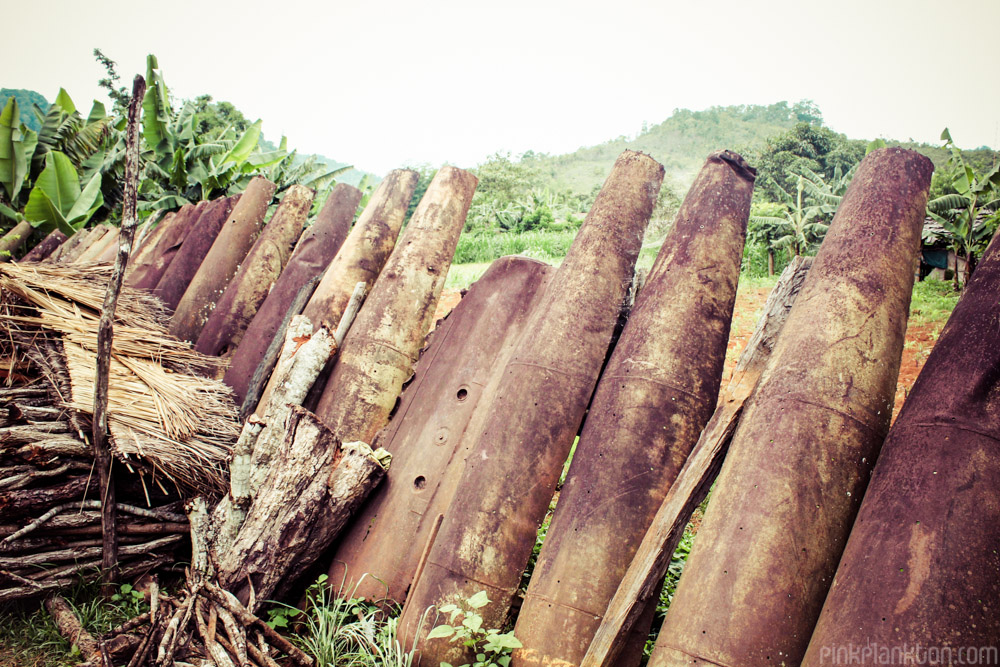
It has been more than 40 years since the war, and Laotians are still dying, to this day. Curious children playing in the fields are still stepping on landmines. Farmers cultivating their land are still digging up cluster bombs. Many criticize the US for their lack of assistance in cleaning up the mess they have left behind.
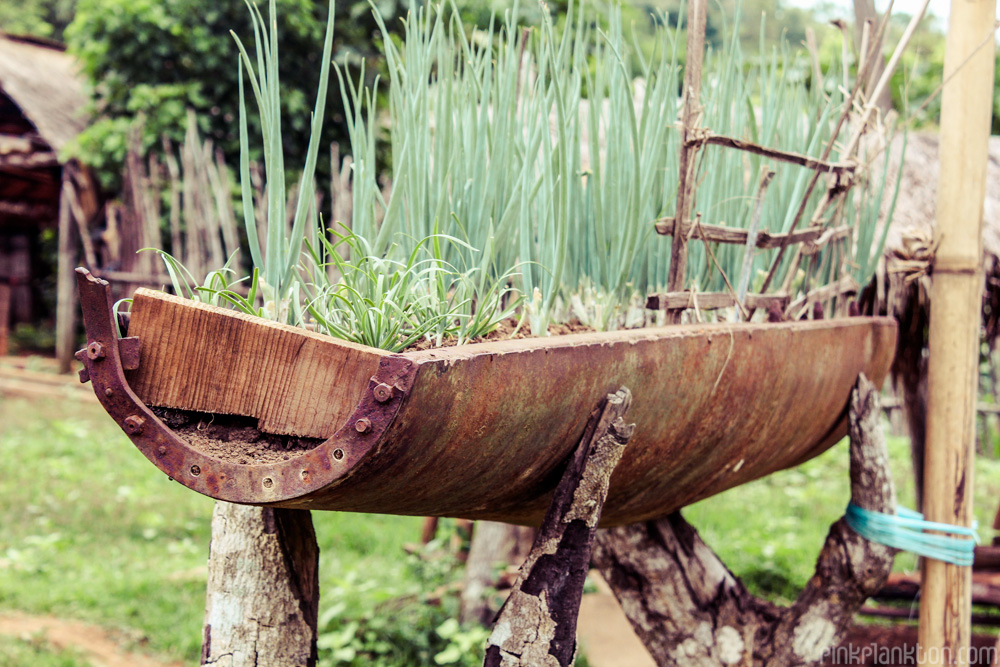
Between 1995 and 2013, the US spent roughly $3.2 million per year on UXO clearance in Laos. Yet, they spent $13.3M per day (in 2013 dollars) over the course of the nine year war, on bombing Laos. The US has not done nearly enough to clear all of this UXO that has been left in Laos, a peaceful country that had nothing to do with the war to begin with.
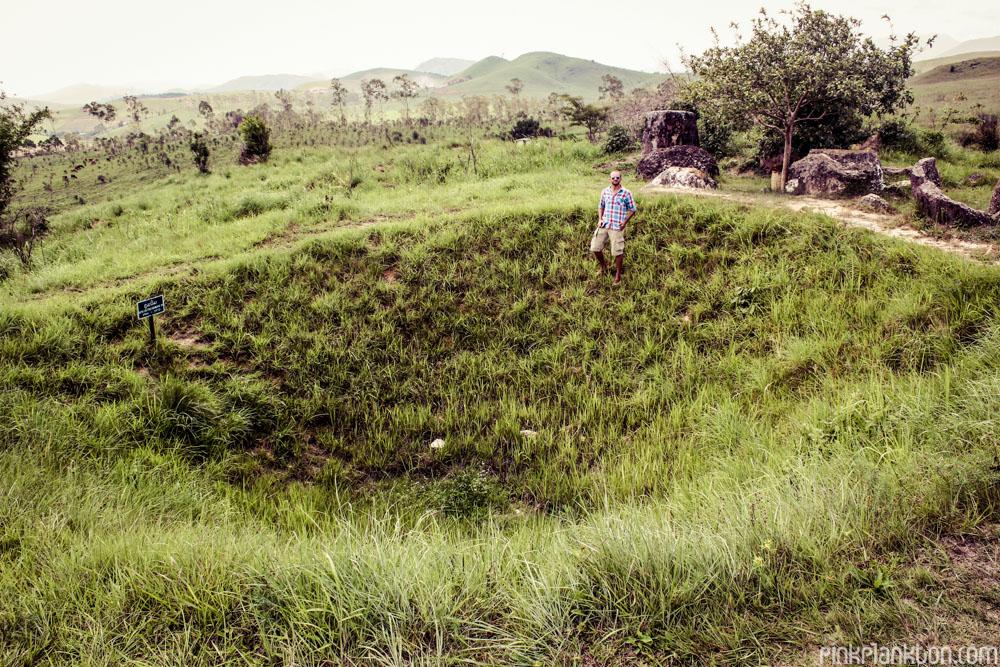
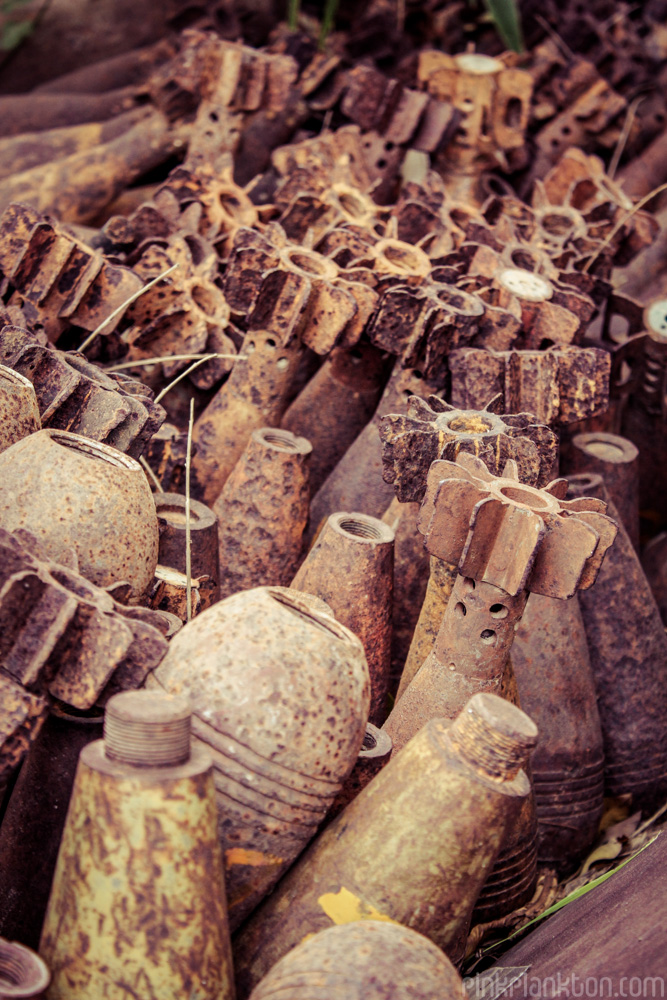
On a lighter note, Phonsavan is also well know for the Plain of Jars. Scattered throughout the area are huge stone jars, as seen in the pictures below. There are 3 different jar sites, spreading vast distances. Archaeologists are still boggled by the meaning of these prehistoric objects. Some estimate they were used as tomb stones, others say they were used to collect rainwater. There are a number of different theories, perhaps we will never know!
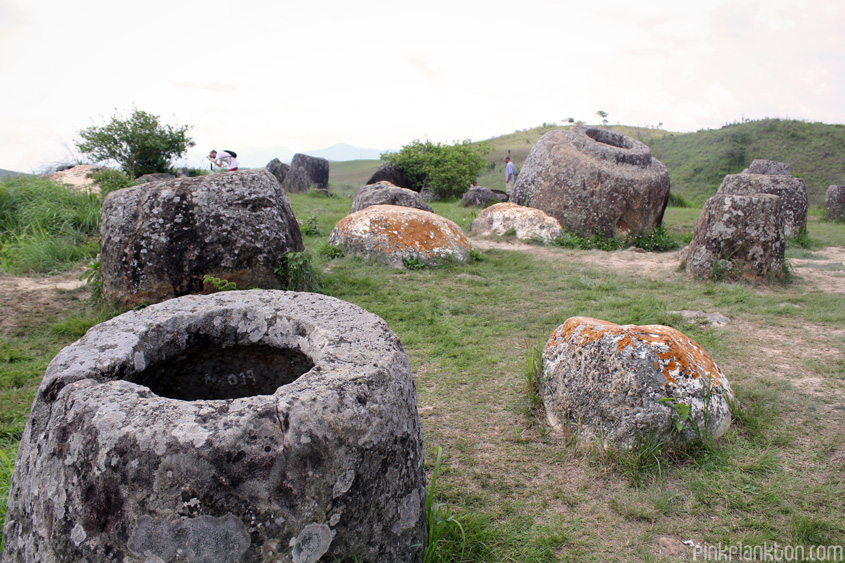
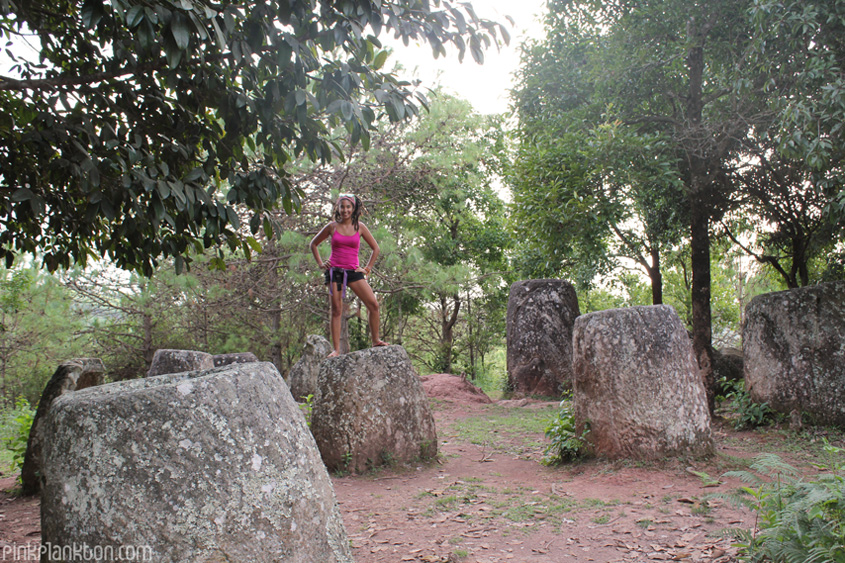
All facts courtesy of Legacies of War.
Going on a long term journey means you may find yourself living in a hostel for an extended period of time. This thought - living in a dorm room, on a bunk bed, with random people, and no privacy - is unimaginable for some. For others, its one of the best experiences of their travels!
You might be asking "Why would you ever want to live in a hostel?" Well, backpackers on a Working Holiday Visa (typically in Australia, New Zealand, or Canada) usually find backpacker-type work (fruit picking, hospitality, etc.), and stick with their job anywhere from 1-6 months. Then, they move on with the money they've saved up. It is often easier, and sometimes cheaper, to live in a hostel, rather than to find a place to rent and sign a lease, for such a short period of time.
I shot the above video, Hostelife, while I was living in Cairns, Australia, at Woodduck Backpackers (which, unfortunately, is now closed down). At the time I was working at the infamous Woolshed Bar, one of the most fun jobs I've ever held. Later that year, I moved to Darwin and lived in a hostel while working at a different local bar.
Every time you pick a hostel to stay at, you're going to consider things such as amenities, cleanliness, price, etc. When picking a hostel to live in long term, here are a few extra considerations I would recommend:
In my experience, smaller hostels are less cliquey, and thus filled with less drama, and more fun.
Before you check in, ask if there are other long term backpackers living there. Long termers like other long termers because asking answering the same what's-your-name-where-you-from-type questions to people just passing through for a few days gets annoying.
If the staff are the type of people that chill with everyone else, they'll most likely become your friends, and you'll be able to get some perks along the way (free laundry, room upgrade, forgiveness when you forget to pay 'rent', etc.)
This is something I did not take into account, and almost paid for in a horrible way. One morning I had come home to realize my entire bag, containing my laptop, camera, and passport, had been stolen (thankfully the police recovered it a few days later!) Moral of the story is, make sure your hostel has a safe and/or lockers, and use them! A lock on your bag isn't enough to deter a thief.
Check in for a few days and get a feel for the people and the vibe. Ignore all reviews you read online because no matter how good a hostel is 'on paper', the people are going to have the most impact on your stay. At the Woodduck we lived with bed bugs and cockroaches for a few months. Thinking back, this was pretty stupid, as there were many other hostels to choose from, but I like to think it was the people that kept us all there.
Here's what you can expect when you decide to call a hostel your temporary home:
You will definitely never be lonely while living in a hostel. There will always be someone else making food in the kitchen, a group playing cards, people chilling by the pool, or those drinking their faces off.
There would be times I would come home from work at 5am and people would still be partying (which is sometimes awesome, sometimes not). Nonetheless, if you are the type of person that likes having company around, you will enjoy 'hostelife'.
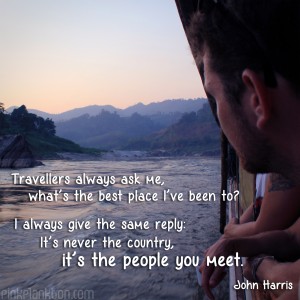
When you live within such close proximity of strangers, you become tight very fast, especially if you are living in a working hostel (a hostel where everyone living there works on an affiliated farm, typically doing fruit-picking). You might be spending 24 hours a day with some of these people. You will make friends and feel like you've known them for years. They will become your family!
After a certain amount of time, the novelty of living in a hostel will wear off. You'll get into the routine of going to work and coming home. You'll have made your crew of other long-term friends, and rarely speak to newbies. You'll leave your belongings everywhere because you think you own the place. You'll get bored of getting drunk and going to the same few bars near the hostel every other night. But nonetheless, it still beats living at home, and you will still have the time of your life!
A short, quick edit on a 4WD trip to Kakadu National Park (Northern Territory, Australia), with a few good mates.